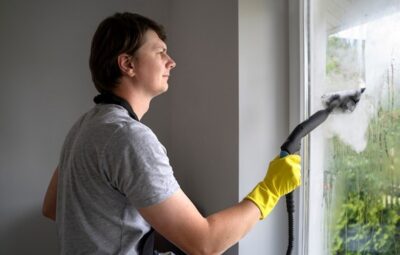Painted walls! Every home has them, and when executed well, they can create warmth, texture, and add comfort to a space but, what about when it goes wrong? Peeling paint is a common yet unsightly problem that occurs with paint. It can make a home look old and unkempt. Here’s what can cause it and how to avoid it at your place.
Why is peeling paint a problem?
Aside from the fact that it doesn’t look good, peeling paint can be hazardous to your health, especially if the paint has been there for some time and contains lead. Older styles of homes were commonly painted with lead-based paints, and these can be toxic and cause a plethora of health problems if it is flaking, chipping or damaged. If you have paint that is deteriorating and your home was built before 1978, or you’d like to check it just to make sure, you should test it for lead. You can do this yourself by purchasing a lead testing kit, or you can get a professional to do it for you.
7 common reasons why your paint may be peeling
Moisture
Moisture can cause a variety of issues for your paintwork. It essentially gets behind the paint and separates it from the surface. Most of the time, you’ll notice this problem starting as bubbles within the paint, and eventually, these bubbles can split open. High moisture areas are prone to this problem, such as bathrooms. If somewhere else in the home has bubbling paint, your gutters may be too full and the water might be spilling over them and onto the house. This extra moisture can seep through the exterior walls and into the interior walls. If your gutters are clean and you can’t see any obvious signs of water coming in, it is worth calling out a specialist to establish where the source of moisture is coming from before it has a chance to spread and become worse.
Paint that has been applied over an improperly prepared surface
One of the biggest mistakes amateur painters make is painting over a surface that hasn’t been properly prepared first. This includes failing to apply primer or painting over polluted surfaces, such as mould, moisture, dust, or dirt. These contaminants not only affect how well the paint sticks, but they can affect the quality of the finish. Preparation is key to achieving a long-lasting and premium finish so, it’s integral that you don’t skip this important step.
The wrong paint has been used for the job
There are many different paint types, and each is designed for a specific application. For example, using interior paint outdoors will most certainly result in peeling paint. Once the sun and rain get to it, it won’t be long before you start to see the quality of your paint diminishing.
The same applies to applying different paints over one another or mixing them together. If you are unsure about which paint is best for your project, be sure to ask a professional for advice. The last thing you want is to waste your money and time painting something only to have it peeling after a short time because you used the wrong paint.
Humidity
High humidity can cause moisture on your walls, and the primary reason this occurs is because of inadequate ventilation. Humidity can promote problems such as mould and mildew growth. The moisture from the humidity can cause the paint to pull away or flake off from its surface. Always ensure that you have enough ventilation in your home, especially bathrooms. Open up the windows to let some of the heat out when having a shower.
The weather
The weather can be unpredictable at times but if you can, avoid painting when the weather is extreme. When it’s very hot, the paint will dry at a rapid rate and this can affect your finish by compromising the bonds within the paint. If the weather is too cold, the paint can fail to cure properly and can flake off. Painting outside when rain is forecast is a big no-no for obvious reasons.
Poor application
To get a superior-looking finish, you must use quality equipment and the proper technique to apply your paint. Cheap brushes and rollers may give your paint job a shoddy looking appearance. How many coats you apply can also affect the end result. Too little and you may not achieve the full pigment or coverage of the colour, and too many can cause cracking.
Wear
Over time, the paint around your home will wear, and one of the signs that it may need re-doing is peeling. To keep your home looking fresh, it’s a good idea to update your painting as it ages with a new lick of paint.
Like most things around the home, your paintwork needs to be applied correctly and maintained as necessary. It is best to address any areas of damage as soon as you notice them to prevent further deterioration.
If you’re looking at repainting areas around your home, but painting isn’t your cup of tea, call in the professionals here at MDC Specialists. We are expert painters and decorators located on the beautiful Gold Coast, and we would love to help you transform your place into something special. Contact us today to get started Painting Gold Coast.





